Abstract
Fiber dimension and durability are recognized as important features in influencing the development of pulmonary carcinogenic and fibrogenic effects. Using a short-term inhalation bioassay, we have studied pulmonary deposition and clearance patterns and evaluated and compared the pulmonary toxicity of two previously tested reference materials, an inhaled organic fiber, Kevlar para-aramid fibrils, and an inorganic fiber, wollastonite. Rats were exposed for 5 days to aerosols of Kevlar fibrils (900-1344 f/cc; 9-11 mg/m3) or wollastonite fibers (800 f/cc; 115 mg/m3). The lungs of exposed rats were digested to quantify dose, fiber dimensional changes over time, and clearance kinetics. The results showed that inhaled wollastonite fibers were cleared rapidly with a retention half-time of < 1 week. Mean fiber lengths decreased from 11 microns to 6 microns over a 1-month period, and fiber diameters increased from 0.5 micron to 1.0 micron in the same time. Fiber clearance studies with Kevlar showed a transient increase in the numbers of retained fibrils at 1 week postexposure, with rapid clearance of fibers thereafter, and retention half-time of 30 days. A progressive decrease in the mean lengths from 12.5 microns to 7.5 microns and mean diameters from 0.33 micron to 0.23 micron was recorded 6 months after exposure to inhaled Kevlar fibrils. The percentages of fibers > 15 microns in length decreased from 30% immediately after exposure to 5% after 6 months; the percentages of fibers in the 4 to 7 microns range increased from 25 to 55% in the same period.(ABSTRACT TRUNCATED AT 250 WORDS)
Full text
PDF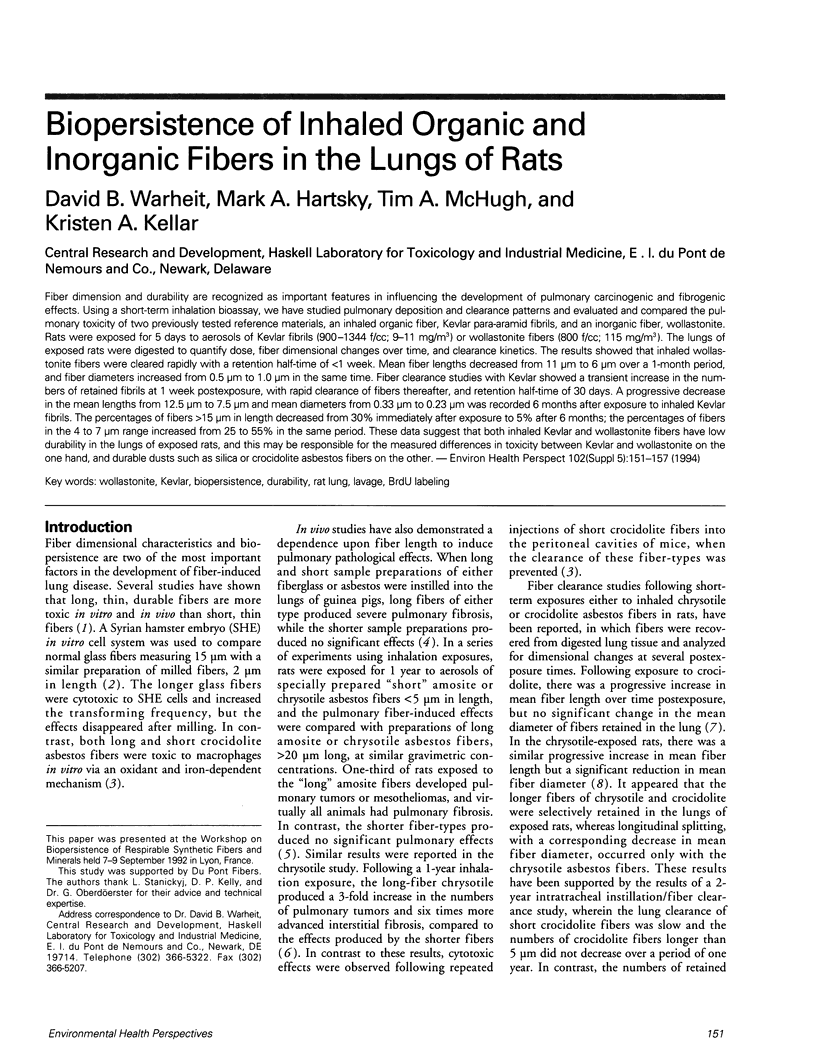
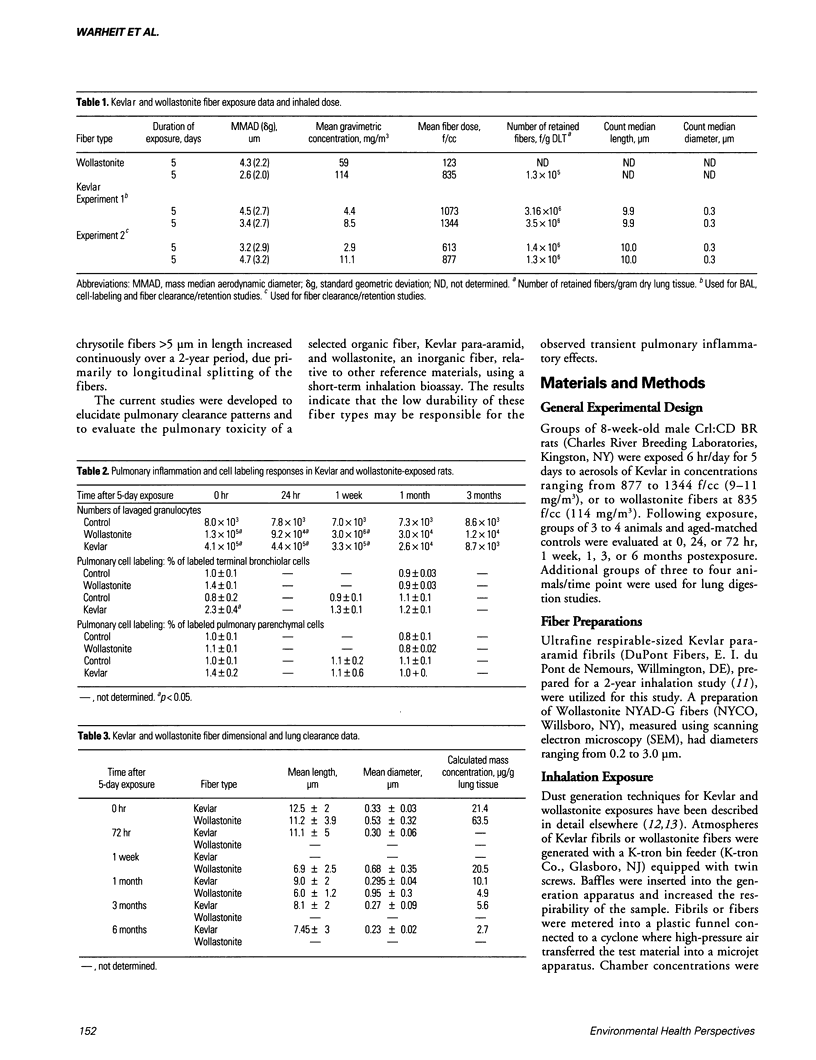
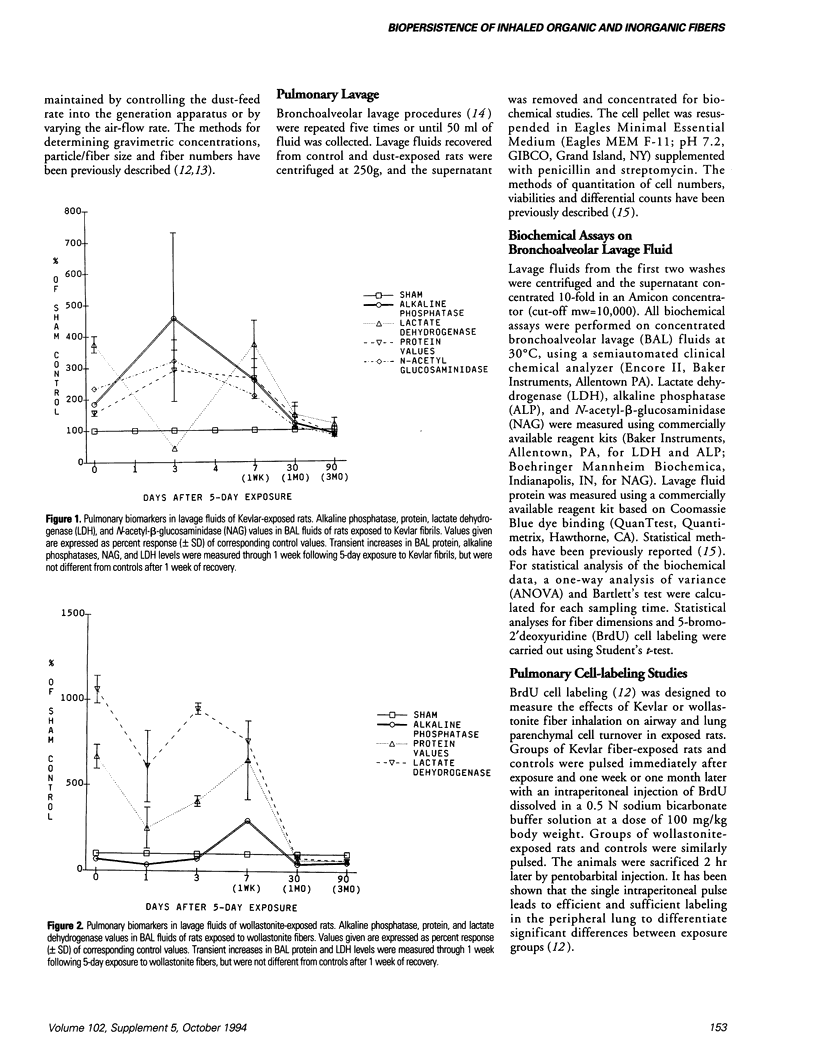
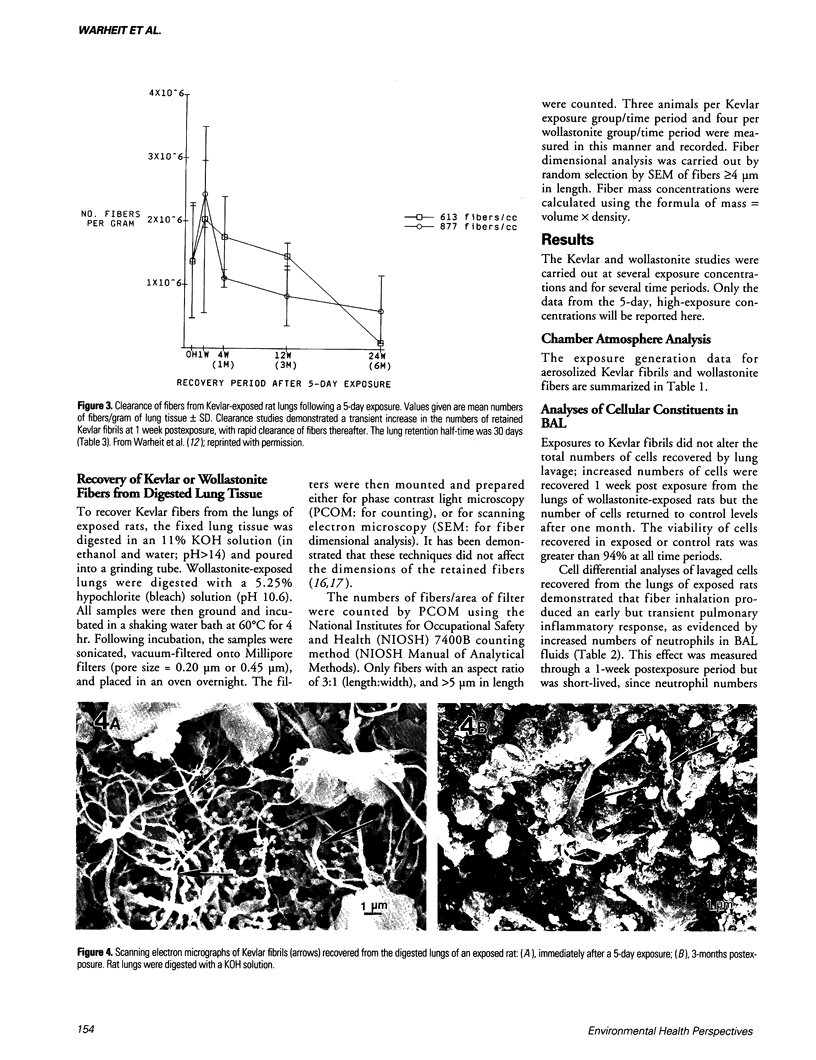
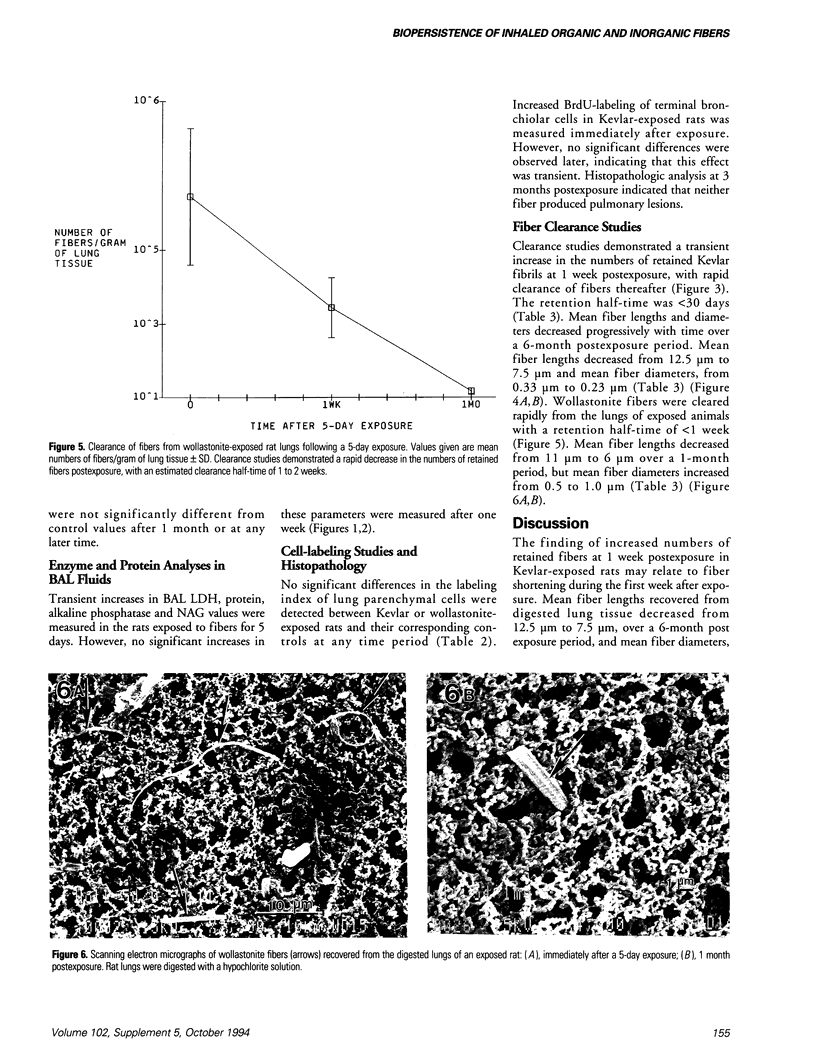
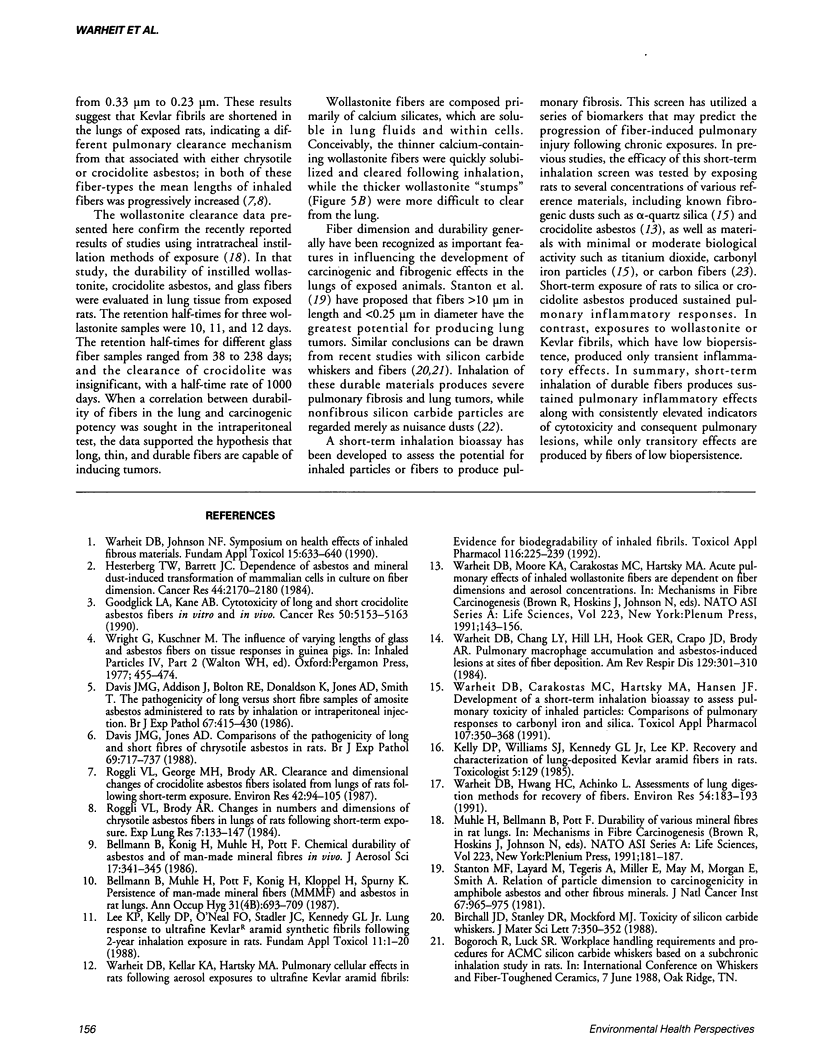
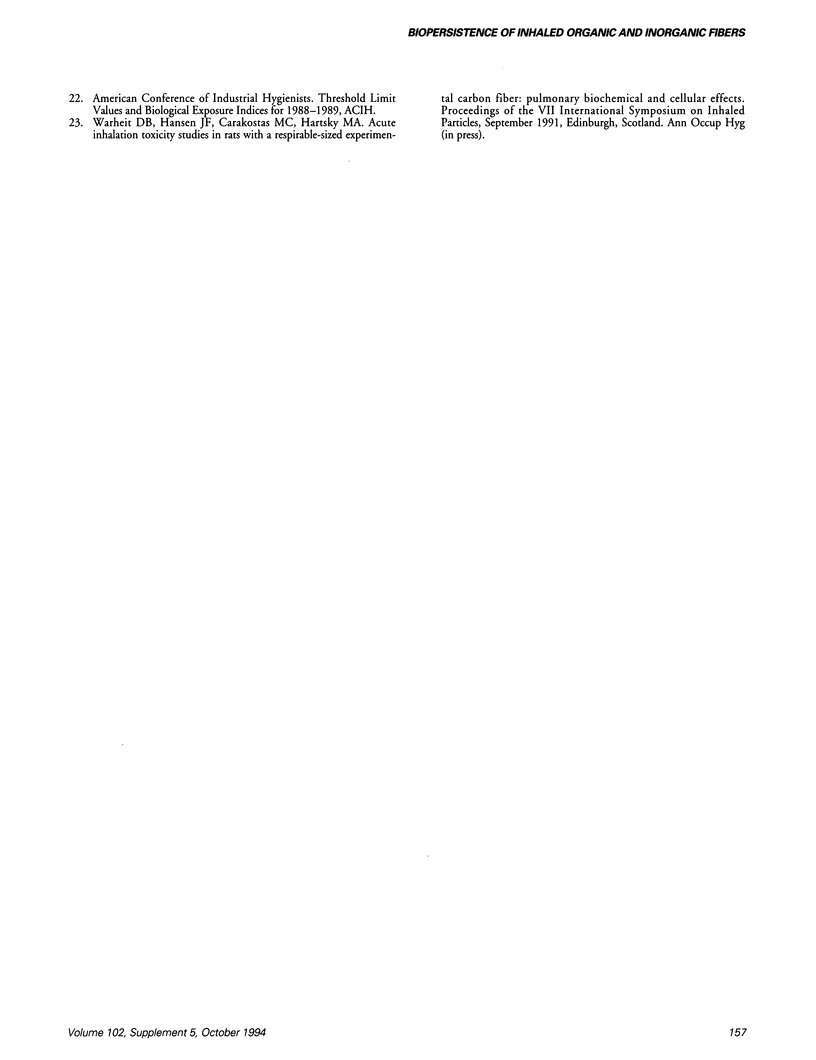
Images in this article
Selected References
These references are in PubMed. This may not be the complete list of references from this article.
- Bellmann B., Muhle H., Pott F., König H., Klöppel H., Spurny K. Persistence of man-made mineral fibres (MMMF) and asbestos in rat lungs. Ann Occup Hyg. 1987;31(4B):693–709. doi: 10.1093/annhyg/31.4b.693. [DOI] [PubMed] [Google Scholar]
- Davis J. M., Addison J., Bolton R. E., Donaldson K., Jones A. D., Smith T. The pathogenicity of long versus short fibre samples of amosite asbestos administered to rats by inhalation and intraperitoneal injection. Br J Exp Pathol. 1986 Jun;67(3):415–430. [PMC free article] [PubMed] [Google Scholar]
- Davis J. M., Jones A. D. Comparisons of the pathogenicity of long and short fibres of chrysotile asbestos in rats. Br J Exp Pathol. 1988 Oct;69(5):717–737. [PMC free article] [PubMed] [Google Scholar]
- Goodglick L. A., Kane A. B. Cytotoxicity of long and short crocidolite asbestos fibers in vitro and in vivo. Cancer Res. 1990 Aug 15;50(16):5153–5163. [PubMed] [Google Scholar]
- Hesterberg T. W., Barrett J. C. Dependence of asbestos- and mineral dust-induced transformation of mammalian cells in culture on fiber dimension. Cancer Res. 1984 May;44(5):2170–2180. [PubMed] [Google Scholar]
- Lee K. P., Kelly D. P., O'Neal F. O., Stadler J. C., Kennedy G. L., Jr Lung response to ultrafine Kevlar aramid synthetic fibrils following 2-year inhalation exposure in rats. Fundam Appl Toxicol. 1988 Jul;11(1):1–20. doi: 10.1016/0272-0590(88)90265-5. [DOI] [PubMed] [Google Scholar]
- Roggli V. L., Brody A. R. Changes in numbers and dimensions of chrysotile asbestos fibers in lungs of rats following short-term exposure. Exp Lung Res. 1984;7(2):133–147. doi: 10.3109/01902148409069674. [DOI] [PubMed] [Google Scholar]
- Roggli V. L., George M. H., Brody A. R. Clearance and dimensional changes of crocidolite asbestos fibers isolated from lungs of rats following short-term exposure. Environ Res. 1987 Feb;42(1):94–105. doi: 10.1016/s0013-9351(87)80010-5. [DOI] [PubMed] [Google Scholar]
- Stanton M. F., Layard M., Tegeris A., Miller E., May M., Morgan E., Smith A. Relation of particle dimension to carcinogenicity in amphibole asbestoses and other fibrous minerals. J Natl Cancer Inst. 1981 Nov;67(5):965–975. [PubMed] [Google Scholar]
- Warheit D. B., Carakostas M. C., Hartsky M. A., Hansen J. F. Development of a short-term inhalation bioassay to assess pulmonary toxicity of inhaled particles: comparisons of pulmonary responses to carbonyl iron and silica. Toxicol Appl Pharmacol. 1991 Feb;107(2):350–368. doi: 10.1016/0041-008x(91)90215-z. [DOI] [PubMed] [Google Scholar]
- Warheit D. B., Chang L. Y., Hill L. H., Hook G. E., Crapo J. D., Brody A. R. Pulmonary macrophage accumulation and asbestos-induced lesions at sites of fiber deposition. Am Rev Respir Dis. 1984 Feb;129(2):301–310. [PubMed] [Google Scholar]
- Warheit D. B., Hwang H. C., Achinko L. Assessments of lung digestion methods for recovery of fibers. Environ Res. 1991 Apr;54(2):183–193. doi: 10.1016/s0013-9351(05)80100-8. [DOI] [PubMed] [Google Scholar]
- Warheit D. B., Johnson N. F. Symposium on health effects of inhaled fibrous materials. Fundam Appl Toxicol. 1990 Nov;15(4):633–640. doi: 10.1016/0272-0590(90)90180-r. [DOI] [PubMed] [Google Scholar]
- Warheit D. B., Kellar K. A., Hartsky M. A. Pulmonary cellular effects in rats following aerosol exposures to ultrafine Kevlar aramid fibrils: evidence for biodegradability of inhaled fibrils. Toxicol Appl Pharmacol. 1992 Oct;116(2):225–239. doi: 10.1016/0041-008x(92)90302-9. [DOI] [PubMed] [Google Scholar]
- Wright G. W., Kuschner M. The influence of varying lengths of glass and asbestos fibres on tissue response in guinea pigs. Inhaled Part. 1975 Sep;4(Pt 2):455–474. [PubMed] [Google Scholar]






